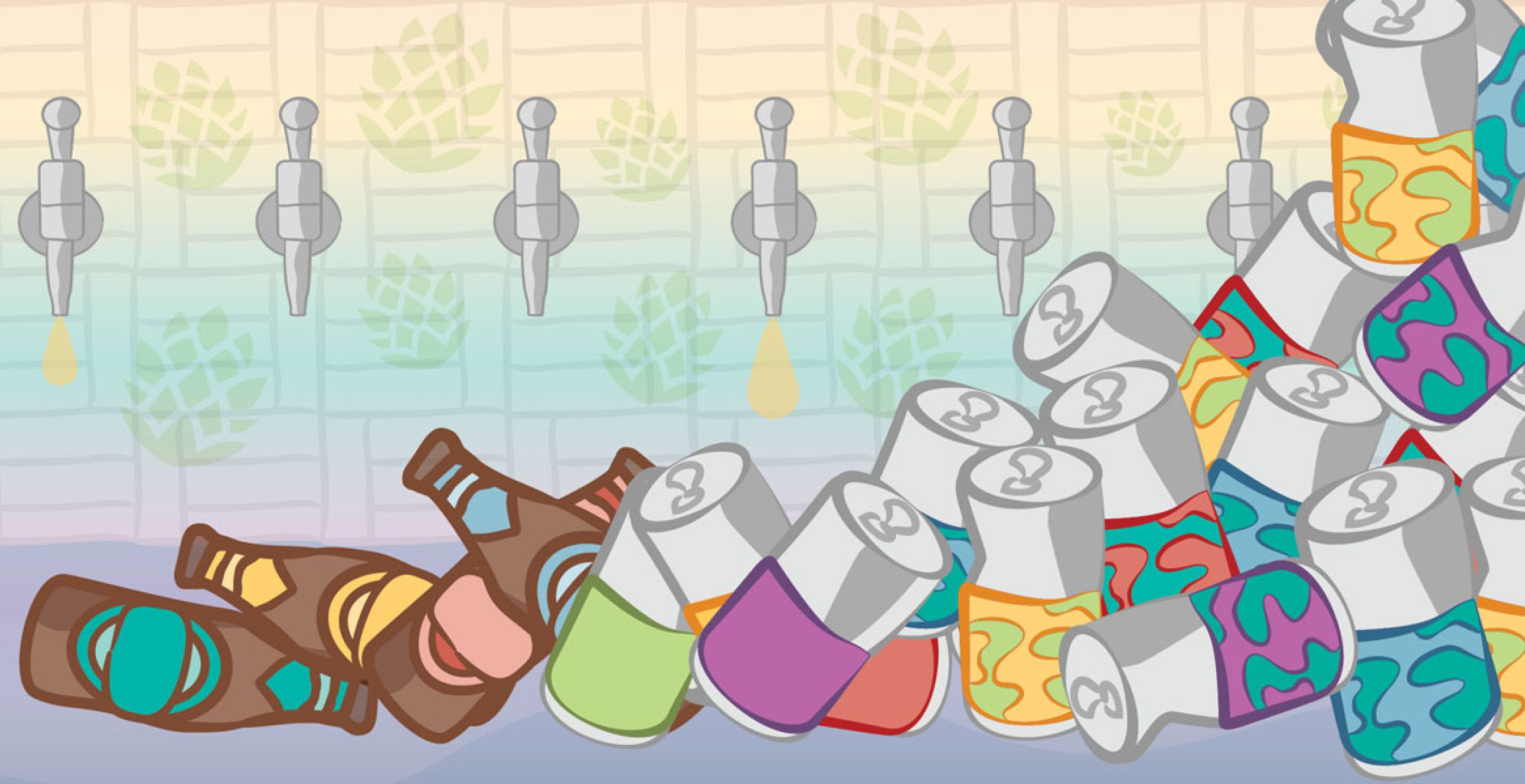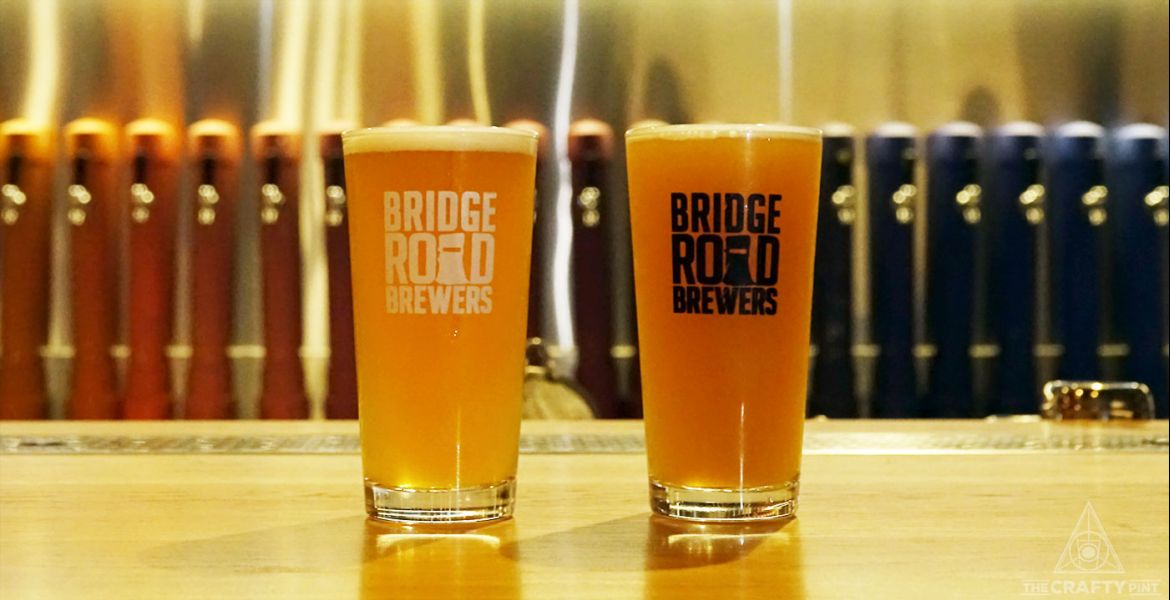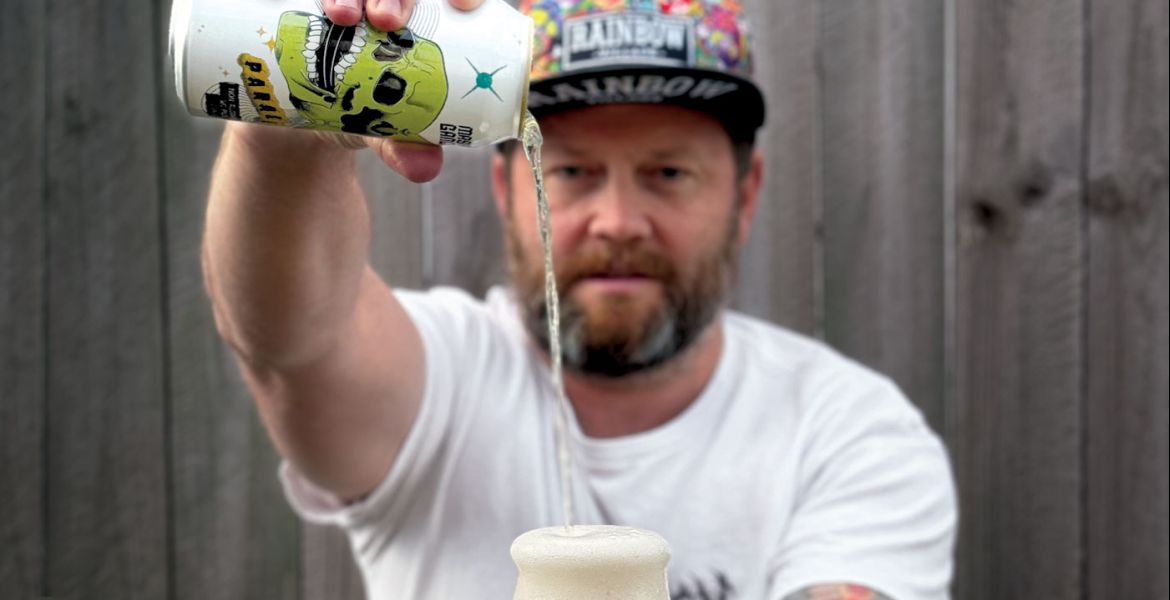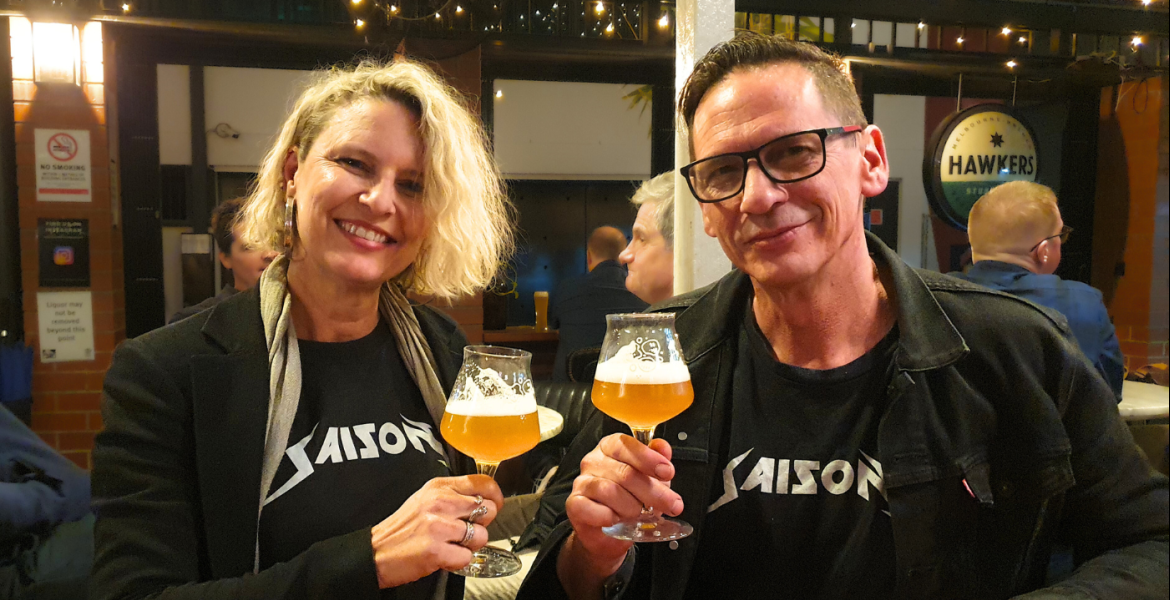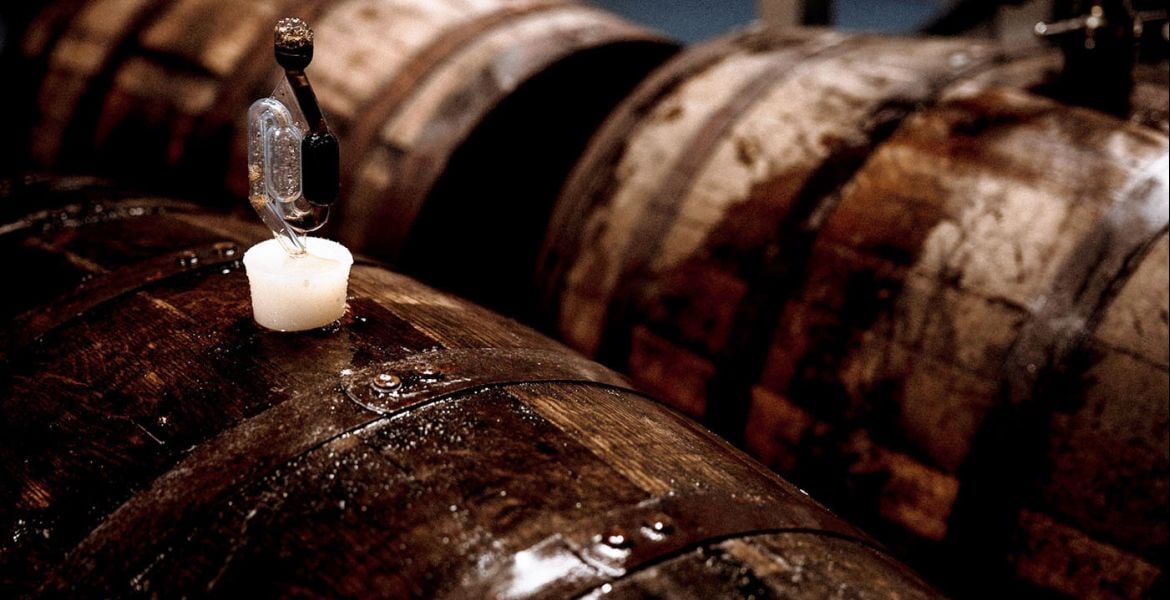If you were an Aussie who was into beer in 1970 – and we don't mean the mere act of drinking it – your options were, let's face it, pretty limited. Unless you looked beyond these shores, you were faced with a choice of 23 breweries producing mostly similar beers.
And if you were that same Aussie with that same passion a decade later, well, there were three fewer brewers for a start, the attempt by British brewing company Courage to shake things up was well and truly fizzling out, and stories involving beer often revolved around business machinations and sponsorship deals. On the plus side, you were now able to brew at home; on the other, beer consumption had started its steady decline following a mid-decade tax hike.
Leap forward another decade and there were the shoots of something different. Matilda Bay had caused such a stir Foster's were to shell out more than $50m to acquire the WA operation and, on a smaller scale, there were pioneers such as Geoff Scharer, who had started brewing beers out of Picton, and Blair Hayden, who had turned the iconic Lord Nelson in The Rocks into a brewery hotel, while Grand Ridge was up and running in Victoria. Meanwhile, in 1989, Coopers, a rare beacon amid the sea of lagers, had tweaked one of their beers to become the Original Pale Ale.
By 2000, while many small breweries had risen and fallen, if your appetite for seeking out something new had survived a full 30 years intact, not only were you one stubborn bugger, but you might have got your hands on the first beers from a few breweries still around to this day: Mountain Goat, Holgate, Nail, Last Drop, Little Creatures.
And a decade on from that, with well in excess of a hundred small breweries and craft brands in operation, you'd have been like a kid with the keys to the sweetshop (albeit a greying, wrinkled kid). Sure, 95 percent of the country was still drinking lagers, but you had a variety of pale ales, wheat beers, dark beers, English ales, Belgian dubbels, and IPAs to choose from, not to mention the oxidised imports flooding into the country.
Looking back from the vantage point of 2020, however, even that looks rather sedate (some might say comfortingly so). Where's your DDH fruit cream triple milkshake IPA, hey? What about your barrel-aged blend of liquids between 12- and 48 months-old partially aged on first use skins from an obscure winery? And you, yes, you, mate – why the bleedin' hell have you only released six one-off hazies this month when those guys in Brisbane are up to eight with 14 hours to go?
It's been an incredible decade. One like none before it in the world of beer. A massive rise in the number of small brewers and a switch from bottles to cans (as demonstrated by our highly scientific chart at the top of the article). Relentless innovation in ingredients, techniques, experimentation, collaboration, boundary-dissolving and ambition matched only by the relentless demand for more, newer, sillier, noisier.
It's been wonderful and insane in equal measure, energising and enervating for those in the midst of it, whose reward has been to find themselves dumped into the midst of a once-in-a-century pandemic that has impacted the booze world in a particularly harsh manner. Jesus, I'm buzzing and drained just from typing the past few paragraphs let alone ten years of this stuff!
But with all the new comes the formerly and the once was. As new hop varieties, yeasts and bacteria have helped drive tastes in exciting and unexpected directions, the desire for and interest in some of the classics that built entire drinking cultures long before haze was anything other than "bad brewing" has waned, if not disappeared entirely.
It can make coming across a well made traditional ESB, Schwarzbier or Belgian strong golden ale almost as jaw-dropping as your first whiff of a fresh West Coast IPA. Even styles that were only starting to make a dent in 2010 have come and pretty much gone, such has been the rate of change. Core ranges are shrinking for many breweries, both in size and importance, while their makeup is a far cry from 2010 too.
So, here we take a look at how tastes have changed, at some of the styles that have fallen by the wayside and, if you scroll down, attempt to put a mark in the sand around a few Aussie firsts. Before that, however, over to Will Ziebell with the ones that got away...
Wherefore Art Thou?
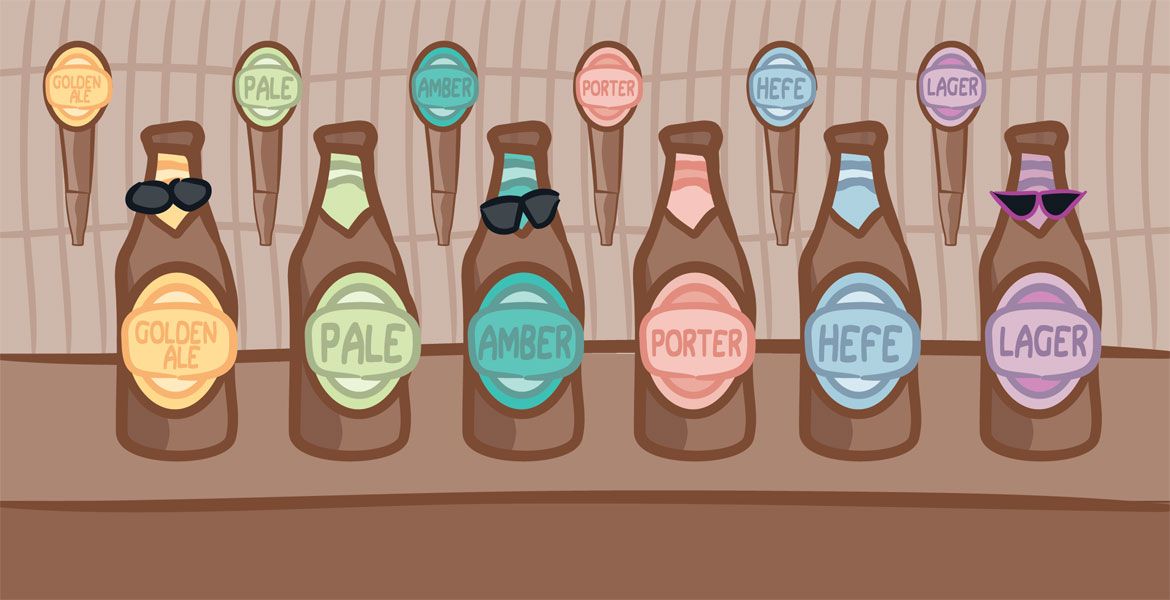
Among the styles to have disappeared is the golden ale, with their rapid rise and subsequent fall from grace something we reflected on a year ago. A month after that article was published one of the more prominent examples also disappeared when Two Birds said goodbye to theirs, a decision co-founder Jayne Lewis says was tough.
“It was obviously a beer that we loved but it had been in decline and just seemed to be steadily going downhill,” she says, adding that the beer’s fans appeared a little too late.
“When we announced it was going, I think we had the most engagement on a post we’ve ever had. If there’s a way to make people love something it’s take it away.”
Jayne says, as with fashion or any trend, people can move away from styles over time and golden ales merely lost their prevalence.
“[People] just weren’t grabbing that golden the way they used to.” she says. “That’s just a reflection that people weren’t picking them up off the shelves. People were potentially moving towards hoppier styles, more sours or just all of the above.”
Whether or not the golden ale will enjoy a revival – we’ve got a write-up on Venom’s DDH spin on their Golden on the site this week, for example – remains to be seen but Jayne points to the wine industry as an example of how renaissances can occur.
“Everything is cyclical so surely everything has to come back at some point in time,” she says.
“Riesling was out of fashion but it’s back again now so there’s no reason golden ales couldn’t have a revival. But I’d say we’re probably ten years away; it’s got to be far enough away to be able to lose whatever stigma it might have had to come back and be cool again.”
Jayne believes there is a wider trend guiding what people are looking to drink, pointing to other styles – like traditional British ales – that struggle to move in Australia. Even the classic Timothy Taylor Landlord is no longer imported.
“Everything needs to be fruity: sour and fruity, hoppy and fruity," she says. "That recognisable character just seems to be the backbone of everything.”
One brewer with a love for English beers is Chris Willcock, chief brewer at 4 Pines. The brewery’s ESB has picked up awards over the years and, while it’s no longer widely available, it remains a regular pour at their brewpubs, including hand-pulled from a cask in Manly.
“It’s still a core beer in our hearts,” Chris says. “It’s one of the 4 Pines founding beers and hasn’t died, it’s just not what we term our core range any longer.”
Chris says the ESB has one of the more complex malt bills of everything the brewery produces and, in general terms, the crystal malt at its heart isn’t as regularly used in the local craft industry as it once was. That fact, plus the beer’s distinctive yeast character and earthy hops, puts the beer out of step with the leaner beers adorned with pronounced New World hops with which contemporary drinkers are filling their fridges.
“The pure richness of the beer doesn’t necessarily equate to Australian familiarities or probably the Australian climate,” he adds.

These days, they treat it more as a winter seasonal with the brewery’s Hefeweizen – another vanishing core range beer – its summer pair. Whether it’s a Belgian wit or a German hefeweizen, the wider world of European wheat beers (unless sour) is one that is in decline, despite picking up some major awards in recent years, as we explored here.
One brewer with a particular skill when it comes to making hefeweizen is Brennan Fielding. The brewery he founded with with Peta in 2007, Burleigh Brewing, claimed gold at the World Beer Cup in the US – often referred to as the toughest of all major beer awards – with their HEF in 2012.
“That beer won medal after medal after medal and we couldn’t sell it,” Brennan says.
Today it’s brewed on Burleigh’s pilot system as a keg only release, though Brennan says many of the brewery’s regulars still love it.
“It really has its following of people who come in, drink it and love it,” he says.
Given it’s pretty much all they drink in some parts of Germany – and has proven popular in the States – he finds it a little surprising we don’t see more of them.
“There could be a lack of education or understanding of a style,” he suggests.
Brennan also points to the limited amount of shelf space in bottleshops and the commercial reality of running one.
“They have to put on what turns over and I think everyone would agree that fresh is best,” he says.
With craft drinkers typically explorers when it comes to beers and breweries, he hopes people will move to beers that aren’t solely hop-driven: “Beers that are yeast-centric are valuable beers that should be appreciated for what they are.”
He says it might also come down to the fact Australia’s beer culture remains in its infancy – the first time he visited the country from his native America, he says bottleshops stocked about three different beers. What’s more, styles have disappeared for decades in the past only to come back as widely popular.
“There probably will be a day for every beer at some stage somewhere,” he says. “The thing I often think about is how the drinking culture in Australia is so young, because if you look at the last hundred years, it’s been focused on one main style.”
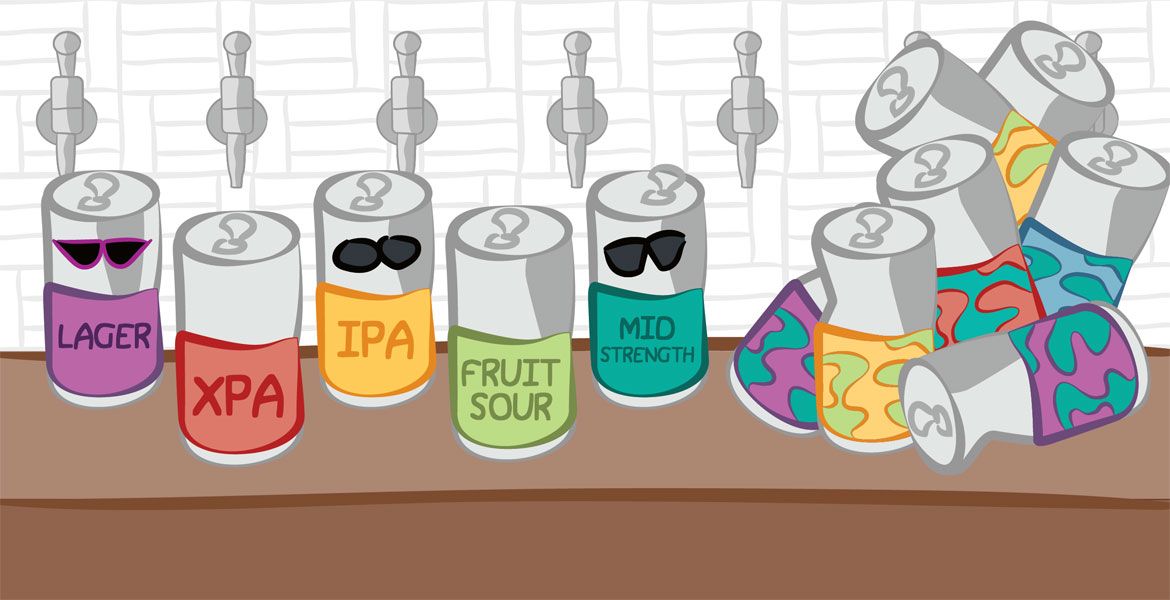
Paul Holgate is another big fan of wheat beers and believes Australians are too, pointing to the gold standard Weihenstephan wheat beers which still sell well here. That in itself could be an issue, he says, with small Australian brewers unable to compete with the iconic Bavarian brewery on price.
Though they don’t regularly package their wheat beers, Paul says they’ll always have a hefe on tap at their home in Woodend. And while people do still ask for it in bottles or cans, feedback from their sales team is always on how poorly they move.
“I’m just a brewer who loves drinking hefeweizens,” Paul says.
He’s also a brewer who loves classic Belgian ales and, while dubbels or tripels might have appeared regularly as limited releases at the start of the decade, they’re rather harder to find now, despite breweries like Wildflower and La Sirene being embedded in brewing traditions from that part of the world.
“They’re beers that brewers love to brew and drink that haven’t necessarily captured the public’s taste buds,” Paul says, pointing to a wider trend over the past half decade that’s seen newer brewers and drinkers favouring slightly sweeter and less bitter styles.
“Less savoury, less bitter, more sweet – which to the extreme is the ice cream fad, but is also the hazy New England style. They’re all sweeter and less bitter styles.”
Paul says it’s a marked difference from an earlier generation of brewers driven to create something different from big brand lagers and for whom the focus was on more bitter and flavoursome beers.
The decline in perceived bitterness is reflected by Chris: “Bitter is an out of style and out of trend word.”
As for the manner in which new styles rise to prominence, Paul points to it as a reality of the modern world, one where brewing knowledge can spread almost instantly.
“The world is such a small place these days,” he says. “When I first started homebrewing there was no internet and when we first started our commercial brewery, it was dial up.
“I don’t think you can say one country has different tastes to another country, it’s a global thing these days that goes from one place to another.”
More widely, core ranges are getting smaller; with the list of a brewery’s seasonals running longer and some breweries avoiding the word “core” altogether. It can create difficulties given the associated costs in creating, packaging and marketing new beers, which can make them less economical than a core range.
“It’s one of the negative and positive aspects of the craft industry," Paul says, "that people want what’s new all the time."
Jayne says the need for a regular stream of new releases is just a reality of the craft beer market today and one most breweries have embraced, or at least accepted.
“It feels like a place you can’t afford not to play,” she says.
“I don’t want to say maturing because I don’t think it’s the right word. It’s just a mark of where the industry is at and what people are wanting, and just this ‘collection’ phase that it seems like a lot of consumers are in.”
First In Line
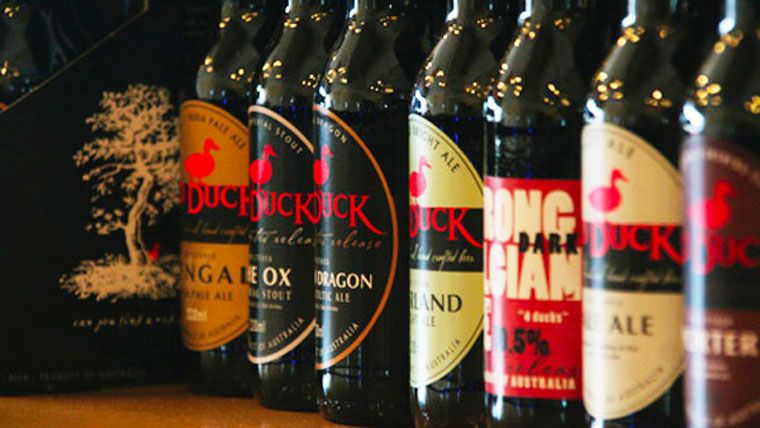
Sometimes it's just a marketing term for something that's been around forever. At others it's a fad that spreads through the global beer world like, um, definitely not a virus or a wildfire but something similar. But, however you view "first", over the past decade there have been plenty of beers, styles, techniques and ingredients appear in Australia for the first time.
Milkshake IPAs (OK, a thousand variants of IPA, many of which really aren't IPAs), Mosaic hops, kveik yeast... there's been many a debut so we thought we'd try to trace a few of the elements that make craft beer what it is today back to where they started.
Initially, it was going to focus solely on new styles born since September 2010, but like this entire series (now pretty much book length) it got out of hand and soon I was harassing brewers, importers, venue owners, growers and writers to see how good their memories were, while scouring our records and anything else we could dig up.
Of course, it's not as if there wasn't wild innovation before 2010. The Wig & Pen was home to all manner of experimentation from the late 90s, with sours on the menu at Redoak from the early years of this century, and Feral playing with spontaneous fermentation in the Swan Valley by 2008 – about the same time Ashley Huntington at Two Metre Tall was working out how he could use the parts of his beers that were going "wrong" in a deliberate fashion.
When The Crafty Pint launched, Scott Wilson-Browne at Red Duck (pictured above) was like the beer world's mad professor, playing with barrels, creating hopless gruits and sour Egyptian bread beers, big Celtic beers, braggots and whatever took his fancy. Since launching, the Bacchus crew have turned their hand at pretty much everything, from cock ale to "styles" like their White Chocolate Pilsner that haven't qualified for the timeline below; I spoke to owner Ross Kenrick this week and they're still knocking out half a dozen beers a week, of which three are typically new.
But we've already made you read plenty of words, time for some pictures. We fully expect you'll find issue with the odd entry below and know of a beer in a certain style that pipped one we've landed upon. If you have an update, let us know. (We've started adding comments at the bottom)
Similarly, the global nature of beer these days means new styles are pounced upon by multiple brewers at the same time: within weeks of The Senator being tapped in Queensland, Hop Nation had launched The Dawn double NEIPA and Ocho The Haze. Grifter's Southern Lord, tagged an XPA, was first released around the same time as Wolf of the Willow's debut beer. The month after Brut Force was released, the 2018 Abbey Collaby for Good Beer Week (another Brut) was tapped, about the same time Jade at The Wheaty was laying one down with Three Weavers and Buxton in Adelaide. Tallboy & Moose's Lightning Axe was in my belly three weeks after Left Barrel's first kveik beer debuted at the Adelaide Beer & BBQ Festival.
You get the point. And now you get the infographic too:

If you're a glutton for punishment, you can find the rest of the Ten Years Of Crafty series here.
Updates to be added the timeline:
- SABRO: Balter brewed a, wait for it, Brut IPA with hops airfreighted in by Yakima Chief Hops (alongside Citra, Mosaic and Galaxy) that was tapped at their brewhouse in November 2018




